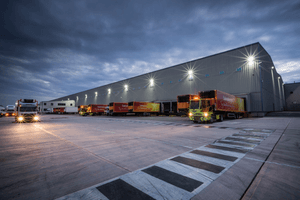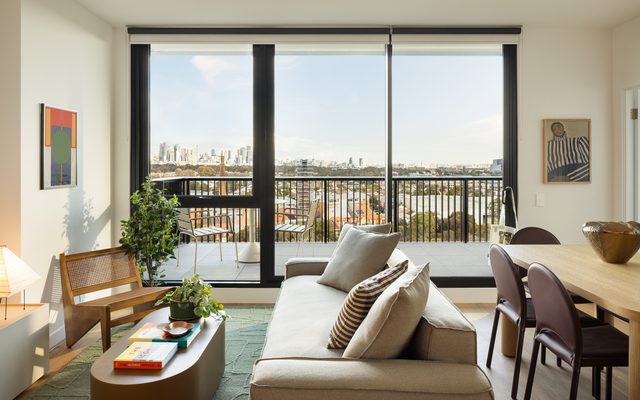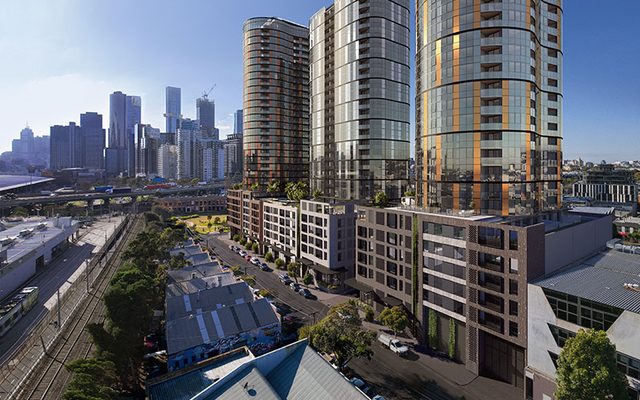This article is from the Australian Property Journal archive
THE build-to-rent sector in Canberra scored a major boost after Fender Katsalidis received approval for a $250 million project, which will become the national capital’s second BTR development.
The proposed development at 220 Northbourne Ave is located at a key intersection under the National Capital Plan’s City and Gateway framework, with direct access to light rail and only 2 kms north of the CBD.
Approved are three buildings comprising 393 apartments in addition to a commercial building and retail tenancies on the ground level.
“The build-to-rent typology in Canberra is in its infancy but is a critically important addition to residential living. We’re thrilled to continue shaping the landscape in Australia’s Capital Territory and set a standard for excellence in build-to-rent living,” Fender Katsalidis associate principal David Robinson said.
The development will also boast strong sustainability credentials.
Fender Katsalidis worked closely with ESD consultants to examine glazing performance, shading, window-to-wall ratios and the placement of balconies and wintergardens. This resulted in a 31% reduction in cooling peak loads, a 13% reduction in heating peak loads, and a 23% reduction in total energy demand.
Fender Katsalidis also worked with landscape architecture and urban design experts Oculus to provide year-round greenery that improves community amenity, improves tree canopy coverage and habitat biodiversity.
“Given its altitude and colder climate, Canberra has a large variance in annual temperature and a high energy usage in the winter months, meaning rigorous energy testing and analysis of energy use across the full buildings was integral to informing the design and location of apartments and living spaces.
“The sculptural horseshoe form of the central residential building features open-air corridors that provide through-apartment cross ventilation and enable greater flexibility in living through the warmer months. Carefully considered solar access and efficient materials were chosen to create high performing facades across the year. The precinct will be a gas-free, all-electric design in line with the growing use of renewable energy in Canberra,” Robinson said.
Although BTR is a relatively new concept in Canberra, across Australia, the sector is growing rapidly in other capital cities with supply set to increase by 3.5x times by 2026, with an additional 16,500 apartments set to enter the market.
Currently, Melbourne holds the lion’s share of completed BTR stock in the country, with a 48% share. South East Queensland follows with the next greatest share of completed stock, at 39%, as a result of conversion of the former Gold Coast Commonwealth Games Village.
By the close of 2023, completed institutional BTR assets represented an estimated market value of circa $3.3 billion.
This is around 80% of the national BTR market and 0.03% of the total value of Australia’s residential market.





